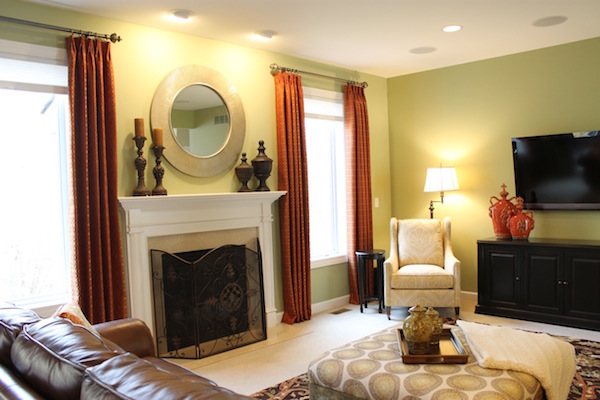
A fireplace mantel conjures images of warm winter evenings, a quiet night with a good book, or a romantic fireside dinner. There is little wonder why family pictures often center around fireplaces; there is something strong in the connection between the hearth and heat of a home and the metaphoric heart. The focal point, of course, isn’t the mantel. It’s the fireplace. But without a decent fireplace design, your fireplace ends up looking more like the remnants of a burnt-out colonial house than a place meant to warm your home.
Fireplace Mantels—The Basics
A fireplace mantel is a shelf that frames the opening of a fireplace, covering part of the chimney breast. Also called a mantelshelf, mantelpiece, or corbel, it is meant as an ornamental facing to your fireplace, most often some sort of shelf that projects just above the opening of your fireplace pit. There are many variations of a mantelpiece, and they sometimes are said to include not only the shelf but also the entire façade.
How a Mantel Fits in Your Fireplace Design
Your fireplace is made out of some sort of fire retardant material—stone, tile, brick. (Or at least it better be.) These materials offer a very specific design element that does not always fit your home’s interior design. Wood, for instance, might be the central design element in your home. Or iron. Or perhaps it’s simply a much softer, subtler style than the materials used, perhaps a cloth or lace pattern. A fireplace mantel can be used to dress up or down your fireplace design to fit with your interior design. Equally important, it offers a platform on which to place other design elements. People choose to use it as a bookshelf, a place for family photos, or for candles and ivy, to name a few. It also offers a base from which to hang artwork or as a place to put seasonal decorations.
What Materials Are Mantels Made From?
The materials can be as sophisticated as a wood mantel with dentil molding, or a cast or carved marble, or it can be as simple as an understated rock slab or stained wooden beam. Each of these is a very specific design choice. Dark stained wood might be used to dress up the fireplace while a light finish will offer that cabin casual feel. Iron or other metals can make things formal while a stone slab can give that simple elegance only stone provides. There is a tremendous selection of elegant mantel styles, materials and finishes out there—as many as you can dream up. The difficulty is finding the one that is right for you.
Ready to start your fireplace mantel?
Find ProsDesigning your Fireplace Mantel
For those who want the quick job, or the easy choice, there are many varieties of fireplace mantel kits out there. These can be installed with ease by either yourself or your contractor, handyman, or carpenter. They come in a wide variety of designs, allowing you many choices to fit with your décor. But finding the right design is difficult, particularly for such an important focal point in a home, so many homeowners choose to create custom mantelpieces.
For the same reasons, homeowners also often choose to hire an interior designer. Even if you don’t choose to do this, at the very least it is important to buy or borrow various sample materials and bring them home to imagine how they might look installed. These samples can be found at most home centers, lumber and building materials stores, or millworks and fireplace stores. They will help you see texture against texture and color against color as they fit into the room. A beautiful antique wood might look wonderful in the store but terrible when placed above a brick fireplace. You will rarely know this until it’s sitting there in your home.
When you settle in on a design, installing your fireplace mantel is an easy task. In just about all cases a mantelpiece is simply a dressing, a façade fastened to your fireplace. Once installed, the real part of incorporating it into your interior design begins. What goes on your hearth, at the center of your home? Well, that’s entirely up to you.
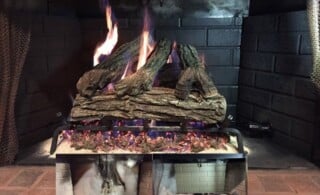 Upgrading Your Fireplace
Upgrading Your Fireplace 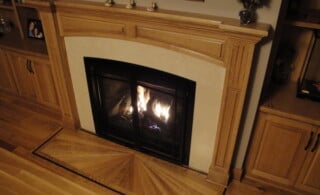 Choose the Best Fireplace for Your Home
Choose the Best Fireplace for Your Home 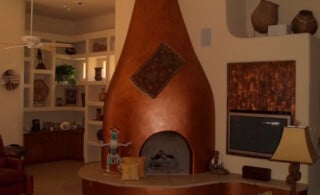 Add Southwestern Feel with a Kiva Fireplace
Add Southwestern Feel with a Kiva Fireplace 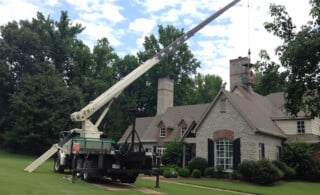 The Importance of Chimney Repair
The Importance of Chimney Repair 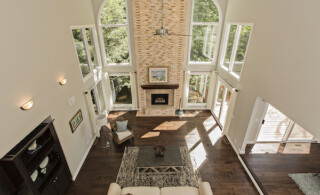 Fireplace Installation: The Basics
Fireplace Installation: The Basics 

Are You Familiar With This Topic? Share Your Experience.